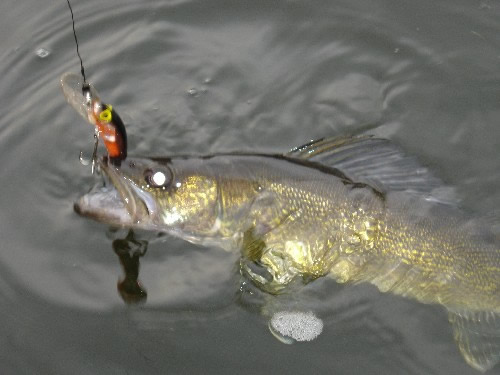
MOSINEE, Wis (WSAU) Earlier this year there was another fish-kill at the Big Eau Plaine reservoir in Mosinee. A group of volunteers are trying to restock some of the walleye that were lost.
The group Walleye For Tomorrow had 5,000 walleye eggs. Many have already hatched and have been put into the water. The group estimates that about 200 of them will reach 15-inches and will start to spawn on their own. They hope to keep stocking the area for the next three years to make the fish population viable again.
There was a large fish-kill on the Big Eau Plaine in 2009 when the aerator failed. The new aerator is working properly, but it hasn't been able to overcome low oxygen levels from this year's later-than-usual ice.
- - - - - - - - - - - - - - - - - - - - - - - - - - - - - - - - - - - - -
Editor's note: Cathy Wendt, Director of Environmental Affairs of The Wisconsin Valley Improvement Company submitted the following information concerning this story:
· The fish kill in 2009 was not caused by the aerator not being operated. The aerator was operated but was in need of repair since the original Eau Pleine aeration system was installed in 1981 as a temporary effort to provide a fish refuge when dissolved oxygen conditions became low in the reservoir. The aerator was re-designed in 2009 and updated in 2010. The primary objective in the re-design was to increase the size of the open water area during the ice-cover period. The primary goal of operating the aeration system is still to provide a refuge for the fishery when periods of low dissolved oxygen occur during the winter ice-cover period and it is not designed to mitigate the anoxic conditions in the reservoir.
· The fish kill this year (which we do not know the severity of yet) was not caused by the long winter. The fish kill occurred in January only a couple weeks after the latest recorded freeze-over date. The aerator ran for 69 days this winter at a cost of more than $9,500 ($9,000 paid by WVIC and $500 paid by Marathon County).
· The historical and present-day fish kills in the Eau Pleine Reservoir are symptomatic of a serious water quality issue – that being non-point source (NPS) pollution from the 375,000 sq mi agriculture dominated watershed. That fish kills continue to occur is testament to the seriousness of poor water quality in the watershed.